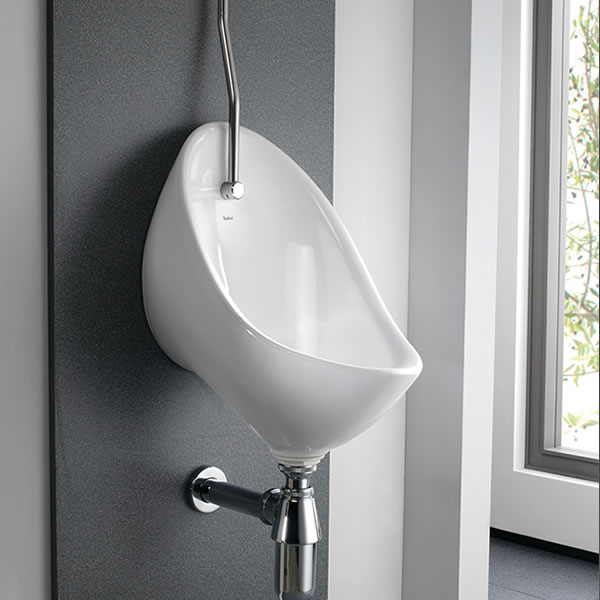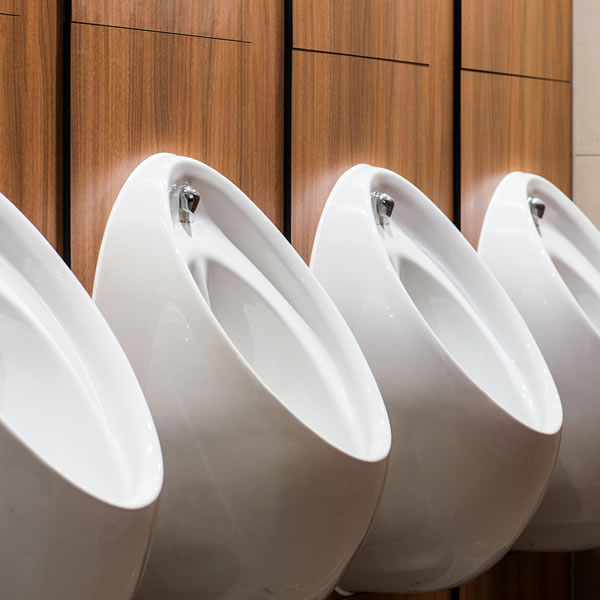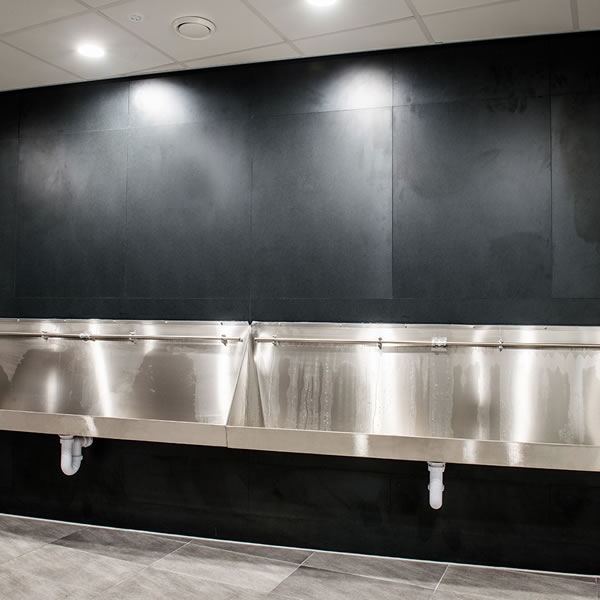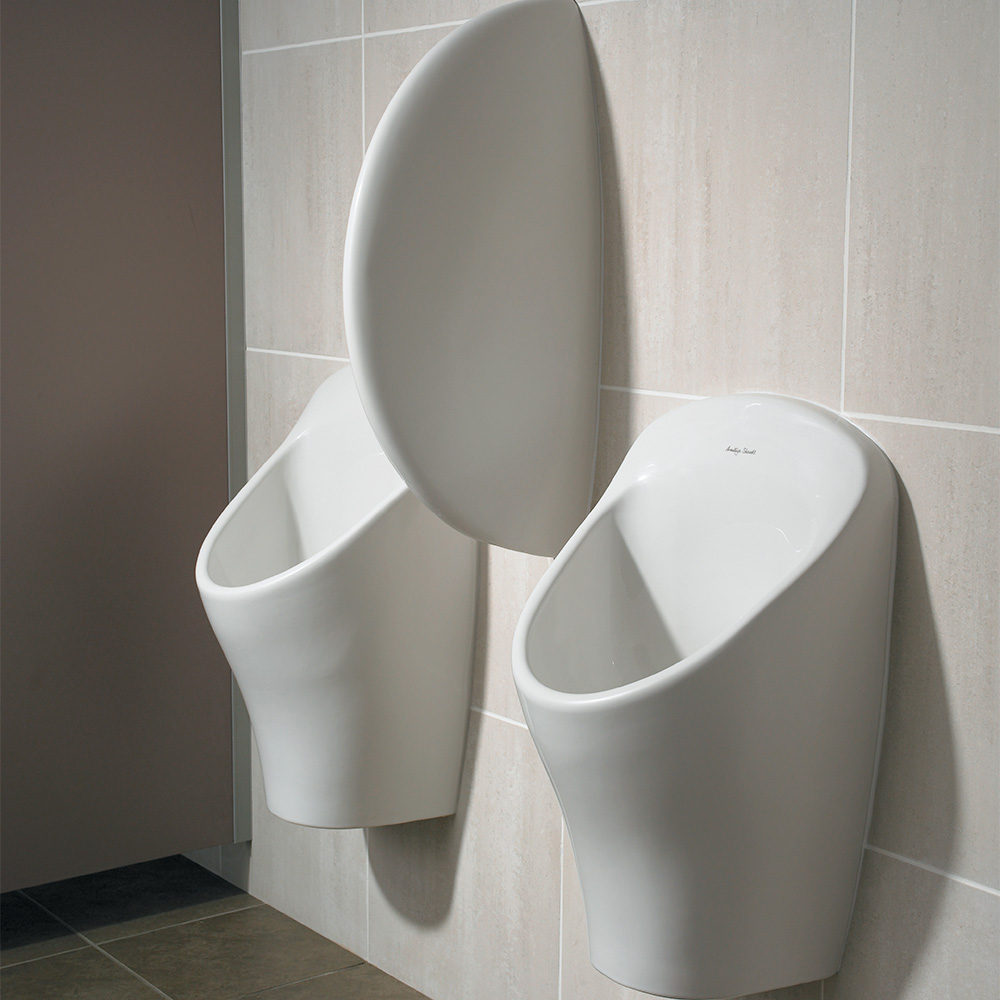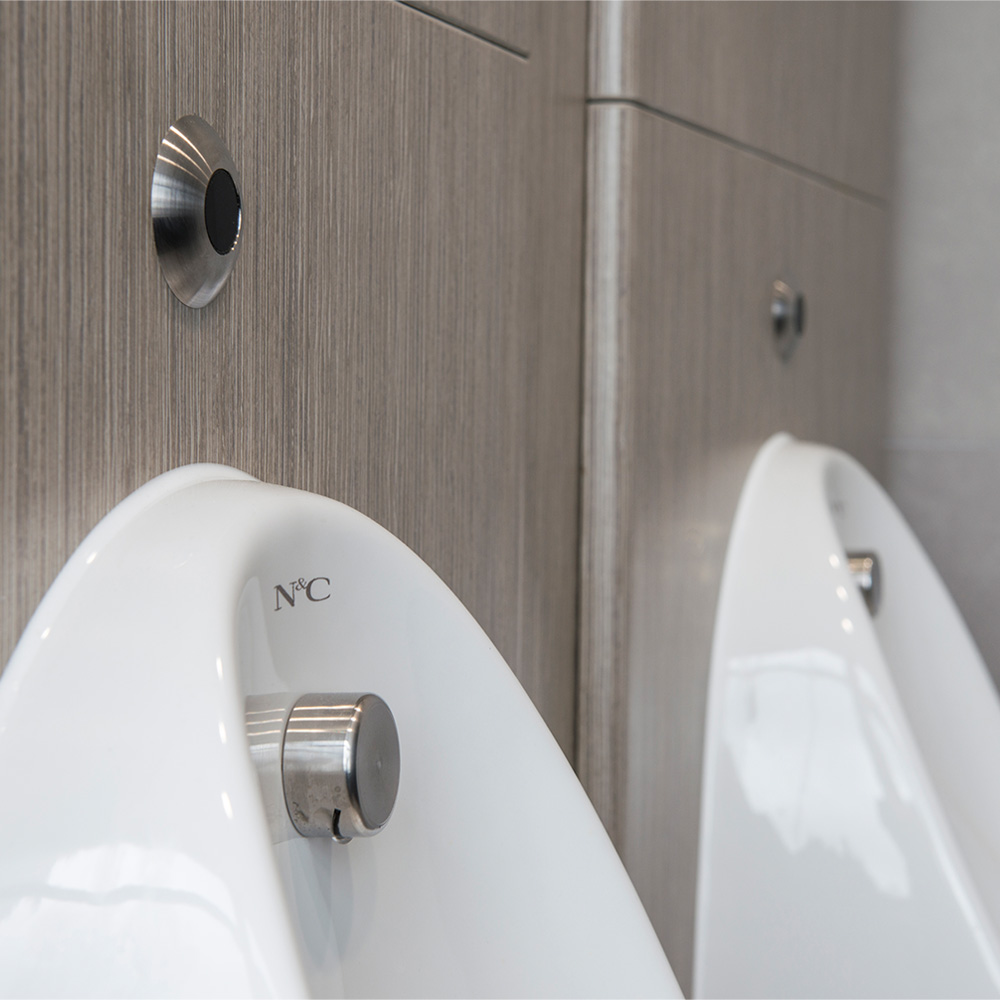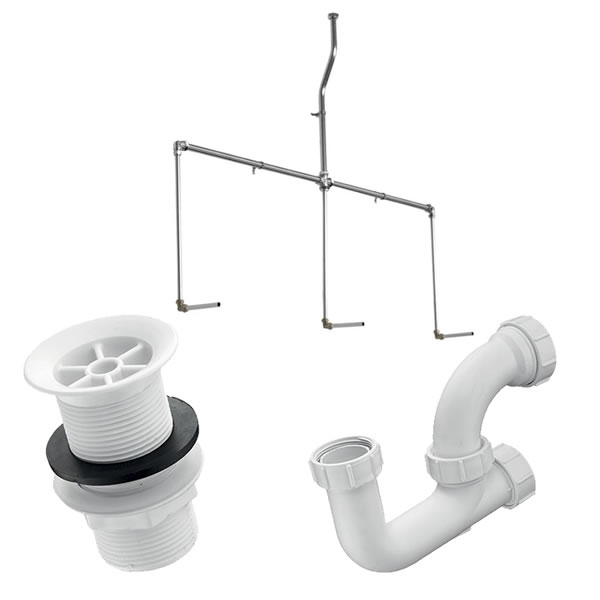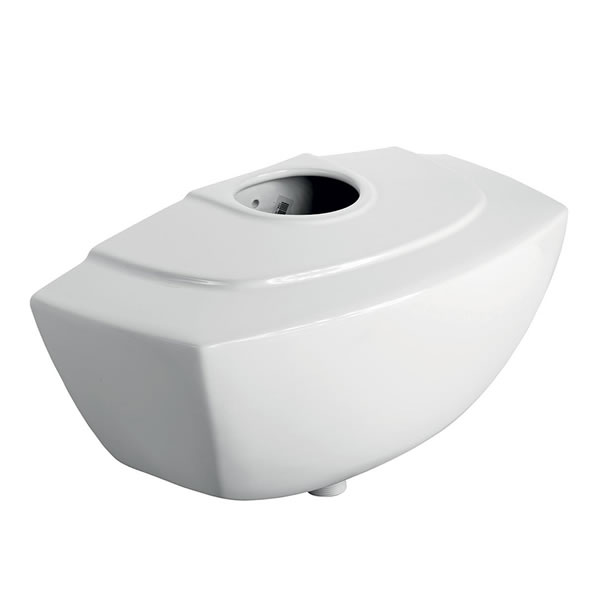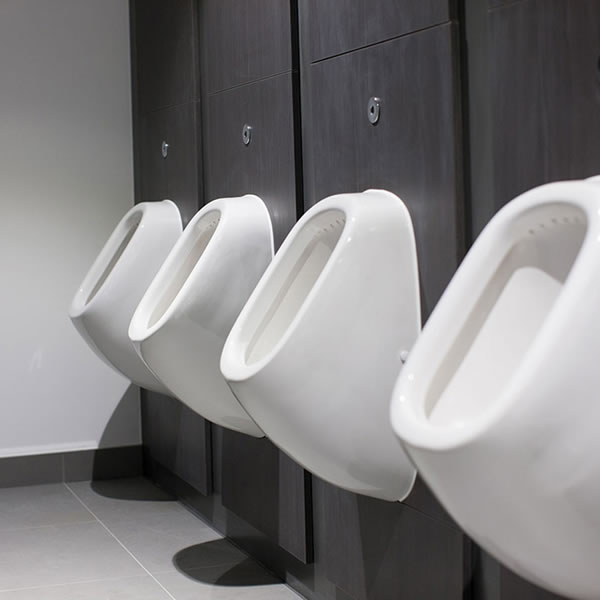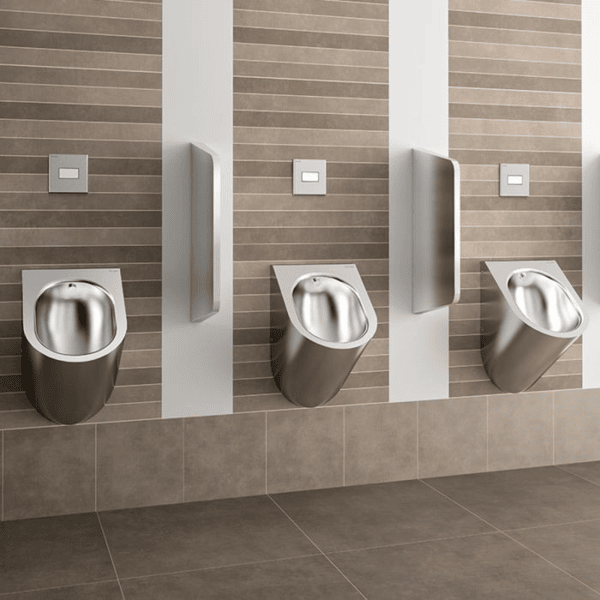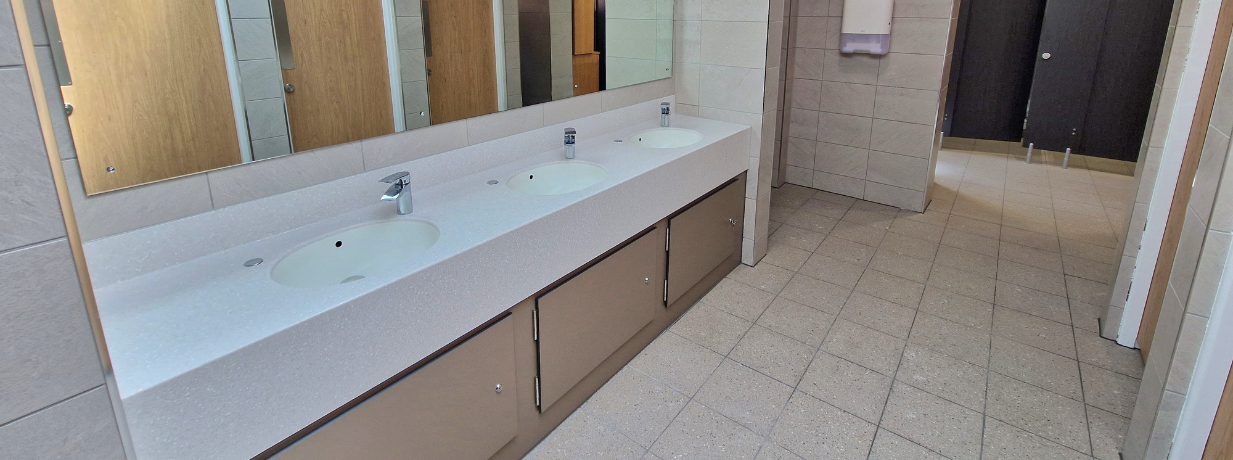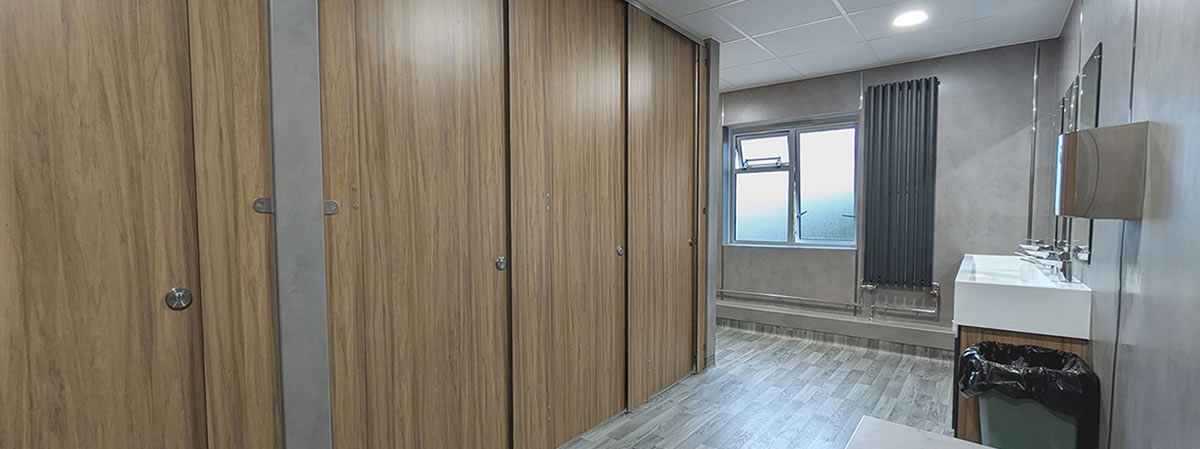Urinals & Urinal Packs
Washroom Urinals for Sale
Our range of washroom urinals for sale is one of the most competitive in the UK. Our urinals can be purchased individually or as convenient packs that include all the relevant urinal parts needed, including Cistern, flush pipes, bowls spreaders, and wastes.
Our urinals for sale come in various materials, including ceramic, stainless steel, and resin GRP. Our urinals are suitable for use in various commercial washrooms, including public toilets, schools, and office environments.
Our Urinal Products
Waterless Urinals
Waterless Urinals are a great way to save on water bills and economically manage your washroom. We carry many waterless urinal options and a selection of replacement filters and associated urinal products.
Urinal Troughs
Made from high-grade stainless steel, our Urinal Troughs come in various bespoke lengths and dimensions depending on your individual washrooms size or design. You can contact our sales team to discuss bespoke urinal trough options in greater detail.
Urinal Cisterns
Our urinal cisterns come in a wide variety of styles, sizes and designs, and from some of the top washroom product brands in the country, such as Armitage Shanks and Twyford, to be the perfect fit for your unique commercial washroom.
Urinal Flush Controls
Commercial Washrooms offer a wide variety of Urinal Flush Controls, and we can offer our independent advice to our customers on the different sensor and manual urinal flush controls available on the market, to see what would suit your washroom the best.
Urinal FAQs
Got questions about installing, upgrading, or repairing urinals? Below, we’ve answered some of the most common questions. If there’s anything we haven’t covered, feel free to reach out online or give us a call on 01202 650900!
How do I install a Urinal in my Commercial Washroom?
The exact process will depend on the layout of your room and the type of urinal you want to install, but here's a simple overview of how to install a urinal in a washroom:
- Choose a suitable location for the installation and prepare the space by removing any obstructions.
- Install the required plumbing connections, including a water supply line and a waste drain.
- Mount the urinal securely to the wall at the desired height.
- Connect the water supply using appropriate fittings and install the flushing mechanism.
- Test the water supply and flushing mechanism for leaks and functionality.
- Make necessary adjustments and finish the area with sealing and protective measures.
Of course, there’s an easier way - let the specialists at Commercial Washrooms take care of it for you! Our experienced plumbers can offer a urinal Supply and Fit Service as part of our full washroom refurbishment package. Get in touch today to find out more!
What are the standard dimensions for a Urinal?
The standard UK dimensions for a urinal can vary, but here are some common measurements you might come across:
- Width: From 300mm (11.8 inches) to 600mm (23.6 inches) or more
- Depth: Around 300mm (11.8 inches) to 350mm (13.8 inches) from the wall to the front edge
- Height: Between 600mm (23.6 inches) to 750mm (29.5 inches) from the floor to the rim
Are there any regulations or codes regarding Urinal installations in the UK?
Several regulations in the UK govern the installation of urinals. Here are a few key guidelines to consider:
- Urinal installations must comply with the requirements outlined in the UK Building Regulations. These regulations cover various aspects such as ventilation, drainage, water supply, and compliance with relevant health and safety standards.
- The Water Supply (Water Fittings) Regulations 1999 set standards for water efficiency and hygiene. Urinals should meet the prescribed water usage requirements and may need to be fitted with water-saving devices such as automatic flushing controls.
- If the urinals are installed in public or commercial buildings, they should comply with accessibility guidelines specified in the Equality Act 2010 and the Building Regulations. This includes providing adequate provision for wheelchair users and complying with requirements for accessible routes, dimensions, and signage.
- The government recommends there be at least one urinal for every 15 male workers.
If you're unsure about how to comply with the abovementioned regulations, please feel free to contact our team. We're happy to explain the specific regulations that apply to your situation and provide advice on how to meet them, so don't hesitate to get in touch!
What are some common maintenance issues with Urinals, and how can they be resolved?
Urinals, like any plumbing appliance, can sometimes encounter issues as time goes on. Here are solutions to the three most common problems:
- If you notice the urinal's internal drain is clogged, it's usually due to something obstructing it. The good news is that this can often be easily fixed by using a plunger to clear the blockage. In more stubborn cases, you may need to use a plumbing tool called a 'snake' to remove the clog effectively. Our guide to unblocking urinals can provide you with more information and step-by-step instructions.
- A flush valve is typically installed at the top of the urinal to regulate the water flow. If you're experiencing low or excessive flush pressure, adjust the regulator on the flush valve to release more or less water as needed. Alternatively, you can eliminate this problem by installing waterless urinals instead.
- It can be frustrating when the urinal doesn't flush. This issue is usually caused by a malfunction in the flushing mechanism and can be fixed by swapping out the existing flushing mechanism with a working replacement part.
If you have any questions, our team are always here to help. Feel free to reach out, and we'll gladly provide guidance on how to keep your urinals in top shape.
How often should urinals be cleaned and sanitised?
Let's be honest: public toilets aren't always the most pleasant places to visit. And it gets even worse if they aren't cleaned regularly.
You can maintain a fresh and hygienic environment in your washroom by cleaning your urinals regularly - at least once or twice a day in a commercial or public space.
However, you should remember that busy areas may require more frequent cleaning, possibly even hourly, to uphold hygiene standards. By regularly inspecting and monitoring washroom conditions, you can determine the appropriate cleaning frequency for your specific setting.
You can also reduce odours and the spread of bacteria by investing in ultra-hygienic Waterless Urinals.
Are there any water-saving features available for Urinals?
There are several water-saving features and technologies available for urinals. Here are a few examples:
- Waterless Urinals are designed to operate without using any water for flushing. Instead, they use a trap system that allows urine to pass through while sealing off odours. This conserves a lot of water and saves you money in the long run by reducing water supply and sewage costs.
- Low-flow Urinals are designed to use a minimal amount of water per flush compared to standard urinals. They typically feature a more efficient flush valve or mechanism that releases less water while ensuring proper sanitation.
- Sensor-activated Urinals will flush automatically when a user is detected, reducing water waste caused by unnecessary flushing.
These water-saving features contribute to environmental sustainability but also help reduce water consumption and utility costs.
Can Urinals be retrofitted to conserve water?
Absolutely! Retrofitting urinals is a fantastic way to save water and reduce environmental impact. You can do this by installing a sensor-activated flush valve (like our Dudley Electroflo™ Touchfree Urinal Sensor) instead of a manual one, or by converting your urinals into waterless models.
Before proceeding with any retrofitting, it's a good idea to consult with specialists like the team at Commercial Washrooms. We can help assess compatibility with your existing plumbing systems and suggest products that will help conserve water. Feel free to reach out!
What type of plumbing connections are required for Urinals?
Having the right plumbing connections is essential for keeping your urinals and water flowing. The type of connections needed can vary, but here are some of the most common plumbing connections you'll often find with urinals:
- Urinals need a Water Supply Connection to provide the water necessary for flushing. This connection is typically made using a water supply line or pipe that delivers water from the main water supply to the urinal's flush valve or inlet.
- The Flush Valve connects the urinal to the water supply and controls the release of water for flushing. It is usually connected to the water supply line and is responsible for initiating the flushing process when activated.
- The Drain Connection allows urine and waste to exit the urinal and flow into the sewage or drainage system. It connects the urinal's drain outlet to the building's plumbing system through a drainpipe or trap.
- A Vent Connection is necessary to provide proper ventilation and prevent the buildup of sewer gases or odours. This connection allows air to enter the drainage system and maintain pressure balance. It is typically connected to the vent stack or a vent pipe.
Not sure you have the proper infrastructure in place? We can help you determine the appropriate plumbing connections for your urinal installation or retrofitting project, so don’t hesitate to get in touch.
Are there any accessibility considerations for Urinals?
Providing accessible facilities in your washroom will ensure everyone can use it comfortably. It’s also a legal requirement under the Equality Act 2010. Here are some accessibility considerations for urinals:
- Installing urinals at the right height is essential for accommodating users with different mobility needs. It’s recommended to have a maximum rim height of 17 inches (43 cm) and a minimum clearance of 29 inches (74 cm) from the floor to the underside of the fixture.
- Providing enough space around urinals allows individuals using wheelchairs or mobility devices to approach and use them easily. Approved Document M has more detail on the amount of space you should leave.
- Installing grab bars near urinals offers stability and support for people with mobility challenges.
- Some urinals may include features that enhance accessibility, such as lower-mounted flush valves, touchless or sensor-activated controls, or contrasting colours to aid individuals with visual impairments.
When designing or updating restrooms with urinals, you should always consult accessibility guidelines and local building codes. If you’d like guidance on how to create a welcoming and inclusive facility for all, feel free to reach out!
What is the lifespan of a Urinal?
The lifespan of a urinal depends on how often it’s used, the quality of materials used, and how well it’s maintained. Generally, a well-cared-for urinal will last 10 to 20 years or even more.
How do Waterless Urinals work?
Waterless Urinals work by diverting urine into a one-way valve and through to a trap. This urinal trap has a less dense chemical than urine, so when the urine enters the trap, it displaces the urine and forces it lower into the trap. Waterless urinals are an excellent way to save water and avoid all the potential problems that come with water, such as flooding. They are also very hygienic, reducing the spread and growth of bacteria.
Why do Urinals get blocked?
urinals can become blocked over time due to the build-up of scale in either the waste pipe work or the urinal traps. This scale is mostly caused by limescale, present in the water, and uric scale, a combination of proteins found in urine and hard water that forms a hard accumulation of scale in the urinal systems.
How to unclog a Commercial Urinal
To unclog a urinal, you can use a plunger like you'd unclog a toilet. If this doesn’t have the desired effect, you can use a drain auger to snake the drain line and remove blockages. For more heavy-duty blockages, you can dissolve them with a solution of muriatic acid and water. Be sure to wear the appropriate safety equipment and gloves to protect yourself.
Many common questions and general advice on urinals can be found by reading our blog. Of particular relevance is the Commercial Urinals information and questions. Browse our Washroom Case Studies, where many of our urinals have been included.
Our specialist team can offer independent advice to you regarding your urinal needs and washroom project, from choosing the correct type of exposed or concealed trap for a particular urinal bowl to mounting and hanging advice for duct set and partitioning, we are confident that we can supply you with exactly the right urinal products. You can order online, or for more detailed advice along with your order, contact us or call our team today on 01202 014829.

